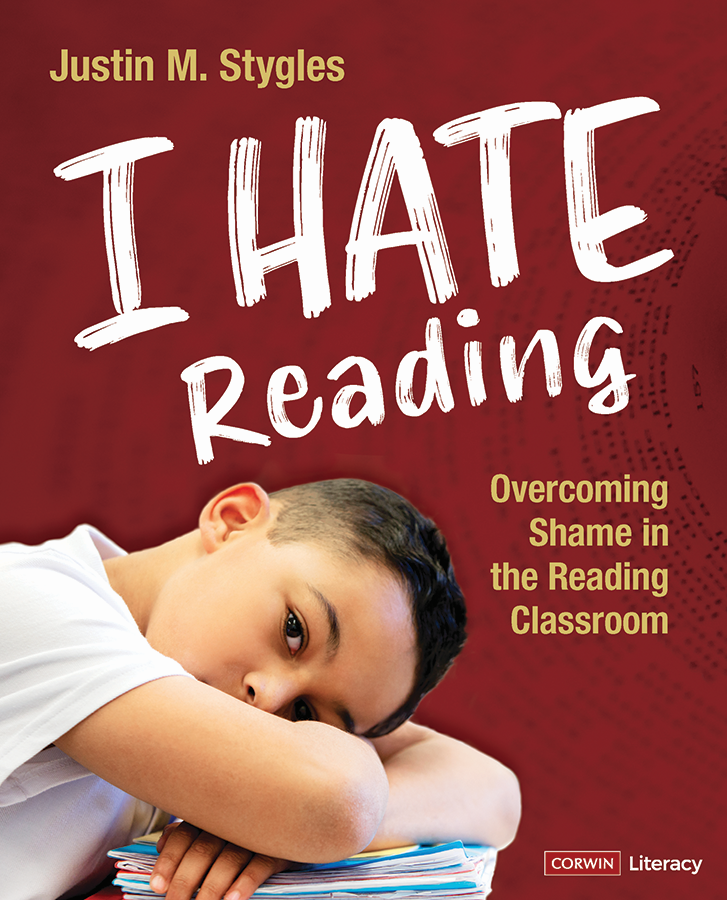You don’t have to turn in many directions before someone says kids can’t read today. It’s been parodied on Saturday Night Live and documented in the Chronicle of Higher Education.
The journal reported, in a nutshell, and paraphrased that kids only read what they want to, and they have no stamina.
Hmmm… sounds familiar.
The question might be: Why?
A student gave me a glimpse into why, likely by accident.
He said, “I like reading when I read.”
Basically, he was saying he likes reading, but only when he chooses to, which wasn’t very often. This means he also had no reason to hate reading because the act was purely for entertainment or to pass the time.
I have found, post-COVID, as the wheels of change bring us back to the Science of Reading that we might be over-correcting. Where we previously promoted love for reading including wide reading and volume. Somehow there was a majesty that students just fell in love with reading. Just like that. By opening a book.
It didn’t make sense to me and it sure as hell didn’t make sense to my intermediate grade students.
Reading, by definition, is very broad. From foundational skills to comprehension and everything in between, reading is broadly defined. However, it’s within the institution of education that there are polar ends, one being foundational skills and the other a love for reading or lifelong readers. In reality, there is so much more in the middle.
In the classroom, as a teacher, I have to ask, “Does every student need to become a lifelong reader.” It’s not a standard. It’s not something that’s graded on. It’s a value.
The reality is that Common Core only points to the ability to read within text-band demonstrating the ability to close read and comprehend text through many avenues. That doesn’t mean students need to fall in love with reading or become lifelong readers.
On the contrary, as a student from the 80’s phonics generation, I learned how to read pretty well… if you only consider my ability to use my phonics and syllabication skills. But guess what? Despite spending days on end in a library, I seldom read (fiction). I was also one of those students who barely read (if at all) what was assigned and still pulled average grades in school, for the most part.
I fear in the Science of Reading age that we are back to focusing too much on foundational skills, that being phonics. It’s an overcorrection. There is no such promise with the Science of Reading that students will fall in love with reading. What they presumably will attain is a more efficient ability to access text than say three three-cue decoding.
So, when kids can’t read today, what does that really mean? That’s a broad accusation. Is it that they cannot decode? Is it that they cannot access text? Is it that they cannot use strategies to more efficiently self-monitor for comprehension? Is it that they cannot access traditional texts, such as middle-grade novels vs. middle-grade chapter books? Is it that they don’t have the stamina to sustain reading?
In my two decades of teaching, I have come across more students who struggle to read and try desperately to find out how or why their peers love reading so much. These students tend to think their peers are magical – that reading is literally their superpower. It’s quite defeating for those students. If we’re talking honestly, for those students to become readers, that is to overcome their deficient and negative self-perceptions, it wasn’t more reading that was the cure. No. It was learning how reading worked for them. Only when they could figure out how reading worked for them, with my assistance, did they begin to dip their toes into the possibility of a willingness to read more. By no means was there ever a commitment to fall in love with reading or become a lifelong reader. What they needed was a reading process that worked for them. I’m not going into that here, but the fact is, when students could figure out boundaries that created successful reading, only then did they slowly build the stamina to read.
In my humble, classroom teacher, opinion, what we (continue) to miss when teaching students how to read is just that… how to read. What is it like to be a reader? What is it like to manage reading? What is it like to be in the experience?
The problem is none of these are quantifiable. They are subjective and exclusive to each reader. Therefore, it’s idyllic to consider reading from such a standpoint more than it is practical, yet quite consequential. While we embrace the Science of Reading, the reality is, as time goes on, if we don’t address how to engage with a text, how to make a text work for readers (as opposed to just reading what they are interested in – which is creating its own issues), we’re still going to be asking “why can’t kids read.”
And there’s more to it than that. But, for the time being, I am stopping here. Soon I will discuss the EPIC! Problem and why I think kids “can’t read.”

Leave a comment